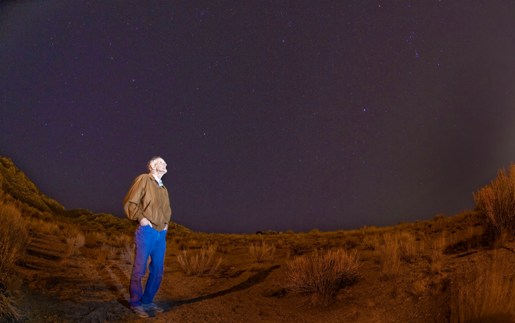Asteroid monitored from outer space to ground impact for the first time, reports Dwain Eldred
Geoscientist Online 26 March 2009

Reports by scientists of meteorites striking Earth in the past have resembled police reports of so many muggings — the offenders came out of nowhere and then disappeared into the crowd, making it difficult to get more than very basic facts.
Now an international research team has been able to identify an asteroid in space before it entered Earth’s atmosphere, enabling computers to determine its area of origin in the solar system as well as predict the arrival time and location on Earth of its shattered surviving parts.
“I would say that this work demonstrates, for the first time, the ability of astronomers to discover and predict the impact of a space object” says Sandia National Laboratories* researcher Mark Boslough, a member of the research team.
Perhaps more importantly, the event tested the ability of society to respond very quickly to a predicted impact, says Boslough. “In this case, it was never a threat, so the response was scientific. Had it been deemed a threat — a larger asteroid that would explode over a populated area — an alert could have been issued in time that could potentially save lives by evacuating the danger zone or instructing people to take cover.”
The profusion of information in this case also helps meteoriticists learn the orbits of parent bodies that yield various types of meteorites. Such knowledge could help future space missions explore or even mine the asteroids in Earth-crossing orbits, Boslough says.
The four-meter-diameter asteroid, called 2008 TC3, was initially sighted by the automated Catalina Sky Survey telescope at Mount Lemmon, Arizona, on 6 October. Numerous observatories, once alerted, then imaged the object. Computations based on these observations correctly predicted that impact would occur, 19 hours after discovery, in the Nubian Desert of northern Sudan. Sure enough, according to NASA’s Near Earth Object program, “A spectacular fireball lit up the predawn sky above Northern Sudan on October 7, 2008.”
A wide variety of analyses were performed while the asteroid was en route and after its surviving pieces were located by meteorite hunters in an intense search. Researchers, listed in the paper describing this work in the March 26 issue of the journal Nature, range from the SETI Institute, the University of Khartoum, Juba University (Sudan), Sandia, Caltech, NASA Johnson Space Center and NASA Ames, to other universities in the U.S., Canada, Ireland, England, Czech Republic and the Netherlands.
Sandia researcher Dick Spalding interpreted recorded data about the atmospheric fireball, and Boslough estimated the aerodynamic pressure and strength of the asteroid based on the estimated burst altitude of 36 kilometres. Searchers have recovered 47 meteorites so far — offshoots from the disintegrating asteroid, mostly immolated by its encounter with atmospheric friction — with a total mass of 3.95 kilograms.
The additional bonus is that the meteorites have turned out to be the rare sort known as Ureilites, which are carbon-rich achondrites. They are thought to have formed from a carbonaceous chondrite precursor that has been shock metamorphosed by impact. This would explain how their bulk composition resembles that of CC meteorites, yet their mineralogy and texture (including nanodiamonds) is so different.
Such meteorites are less likely to survive atmospheric entry and weathering, so early warning of their arrival is crucial to preserving fresh specimens. This makes these finds particularly interesting scientifically, offering some hope of finally tracking down the ultimate source of Ureilite class meteorites.
“We knew that locating an incoming object while still in space could be done, but it had never actually been demonstrated until now” Boslough told Geoscientist Online. “In this post-rational age where scientific explanations and computer models are often derided as ‘only theories,’ it is nice to have a demonstration like this.”
* Sandia is a multi-programme laboratory operated by Sandia Corporation, a Lockheed Martin company, for the U.S. Department of Energy’s National Nuclear Security Administration.